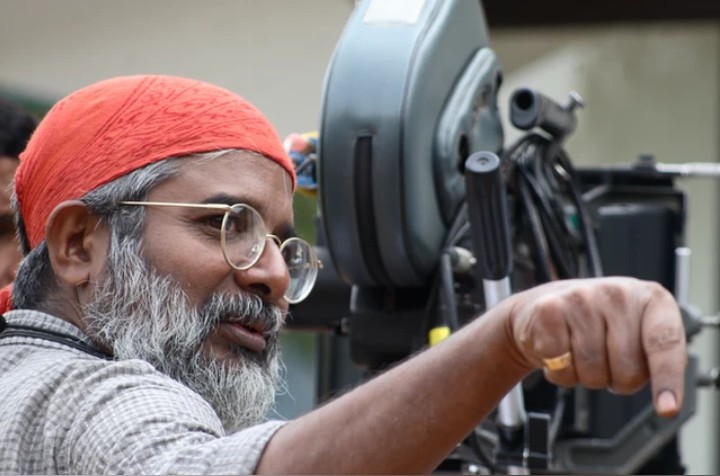
In conversation : Sunny Joseph ISC
Jul 29 2020
Sunny Joseph is a iconic name , Internationally acclaimed Cinematographer who has done more than 40 films in Eleven Indian Languages. His images has been admired by Master filmmakers.
Sunny Joseph breathes cinema since childhood. A passionate cinematographer, who shot to international fame with his brilliant work in Shaji N Karun’s debut movie Piravi in 1987 which won Prestigious Cannes Award.
He is widely known for his association with iconic directors such as G Aravindan, Buddhadeb Dasgupta and Shaji Karun among others. Shaji Karun’s Piravi, G Aravindanand Unni, Adoor Gopalakrishnan, Pamela Rooks’s Train to Pakistan and KNT Sastry’s Tiladaanam are some of the acclaimed films he has shot till date.
He has also won several state awards for his work. He’s also directed The Dog And The Clown (an experimental film for which he had won the National Award) and public awareness films such as Maalakhappovu and Aksharam that deal with issues of sexual abuse and education of the girl child.
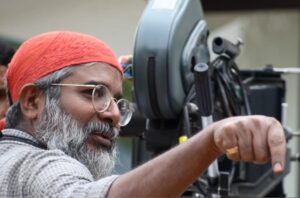
Sunny Joseph shares his visual journey with SICA.
Can you tell us about how you see light
Light is the very most important thing in the world. i would like to share a theory of Light..time to reach light from the outer surface of the Sun to Earth is 7 mints but from Core Centre of Sun to its Outer surface it takes 1 lakh years…so the light we see is one lakh years old.
Starting from Black & White to Colour& from Film to Video to Digital, You have had a profound journey in Cinematography. How do you see these transitions ?
I feel it is a great responsibility for a Director & Cinematographer who transcend and communicate certain emotions to a viewer. Majority of the cinema made in the world is to tell stories, that too human stories. All the stories are told through actors as characters and they impersonate the characters’ emotions. Thus actors are the major component of the frame and cinematographers need to capture the actors beautifully so as the audience can connect to them emotionally. Talking about the tools, the most important thing is ‘Light’ ; Its position, intensity , quality, direction, nature – whether specular or diffused,colour of the source etc., all matters. When talking about colour, we basically refer to the skin tone of the actor and it becomes the reference for the audience. Also, the backdrop or the locations’colour, objects in the background , it’s texture etc., all put together gives the frame a certain kind of feel .
Coming to the shooting formats, we were using motion picture film which uses photo-chemical process. We expose the film negative and post exposure it will be sent to the lab for fixing and development & from the developed negative we print the positive film. It is an enormous process which involves a chain of technicians starting from chemists and it has several guidelines to handle it properly. We need to send the negative as soon as exposed,the lab needs to follow the strict guidelines given by the film manufacturers, need to maintain the chemicals consistency and even the quality of water needs to be controlled. Thus Cinematographer is the one who is wholly responsible until the correct image comes out, finally , after all these processes. The director will trust the cinematographer , fully. This strong trust ,during the film negative times is sometimes missing in this Digital capturing age. Also, i feel people don’t prepare rigorously for shooting in Digital and the discipline to prepare well before capturing a shot has reduced. Because they could see the near output with good professional monitors and using hard disks to store, they really don’t care , since they can go for another take. Though the whole Digital process has become less stressful, i feel the rigor to prepare for a shot has reduced.
How do you see the Dynamic Range/Latitude advantages of Digital Over Film. ?
Yes, the latitude of Film negative& dynamic range of Digital as claimed by the Film manufacturers and Camera manufacturers are arguable. Previously in the times of film negative , 10 stops i.e the range of highlights to shadows we record in a single frame, was claimed. Of the 10 stops we were definitely able to see the change in tone up to 7 stops. Digital camera sensors , they claim a dynamic range of 12- 14 stops. I strongly feel this 14 stop claim can’t actually match the 10 stop latitude of film negative. I once asked this question to an camera manufacturer’s engineer who was demonstrating in the camera assessment test class which was happening in Mumbai. I asked him, if it can capture the fullest 14 stops when we shoot an outdoor sequence , with a character standing under the shadow region which has f2.8 exposure,the outdoor ambient is f16+, the sky coming around 32 and the white clouds come around f90. That means we have 11 stops and i asked him, ‘Don’t we need any lighting? Can we record the fullest tonal range ?, He said ‘No , its not possible’.
But, I would say the newest digital cameras has almost matched the latitude of film negative and we can even extend the dynamic range using HDR. One other important factor is the faithful tonal reproduction of skin tones, where film has a organic reproduction. The newest SONY Venice or Blackmagic 12K cameras are said to have wider gamut reproduction, I’m yet to personally test them.
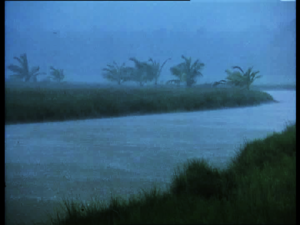
Coming to your critically acclaimed Film ‘Piravi’ , it had garnered accolades in many international film festivals. Your work in ‘Piravi’ received many appreciations. Tell us about the making ofthefilm.
Shaji N Karun, the director of the film and myself , have similar taste and we share a very good rapport .
I was assisting him in three movies , which he was shooting , before Piravi . We used to discuss a lot not only about movies but about life etc., One day he gave me a script in my hand and asked me to give the truest review of it. I have a habit of taking notes while reading a script and I have given some suggestions in the script. The script went through several changes. Coming to the film, I have planned to shoot the daylight sequences with daylight stock which had been just launched by Kodak.We couldn’t get it here.So we got the daylight stock straight from the Kodak Rochester and have used ‘Agfa Gevaert’ for the night sequences. Shaji N Karun and I have extensively done tests at Chitranjali studio before the shoot. And ,sinceShaji N Karun , himself was a cinematographer , I had assumed that he would only shoot his debut film ‘Piravi’. But , I had only one request to him – to let me operate the camera. On the first day of the shoot ,Shajiettan , called me and told , why don’t you start lighting up? Then only I realized , that he has offered the film to me to shoot. That’s how , I started shooting Piravi.
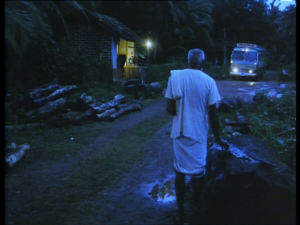
As I said earlier, characters are the first visual element of the image construction which creates the basic volume and shape for the composition. Added to that background also plays a very important role in the visual treatment and we shot almost all the rainy shots with actual rain. We fixed the script that rain plays an important role and we were looking for an old house. After scouting for 10 days we found a house where no one was living for the last 70 years. It was a laterite red bricked house without any plastering on the wall. It made me excited as it gave the basic texture, for the film’s lighting and mood. The characters against that brick wall gave a natural contrast to the film.
How did you manage to shoot in actual rains ?Must have been very difficult to control the consistency of the lighting too… Tell us about that
We waited for 3 seasons for perfect rainy days and shot the sequences in October . The monsoon with its gloom gave us dark interiors. It helped to convey the sadness & sorrow of the father. You can see the rain as the background element in most of the scenes and the most important portion was the climax of the film. Unfortunately during the last day of the shoot we were expecting the rain but it was not raining on that day. On the consecutive day also our wait proved unlucky. Finally we decided to make rain effect artificially. We used a water pump to spray the water over the roof and the shot was composed from the interior. So with the water droplets coming down like a curtain, the actor will enter the house. It was a challenging shot to light up. Because the ambience was cloudy and it was around f11 and the previous shot was we shot it in the evening was f2. And indoor we hardly had few lights to light up the subject which was nearly 5 stops underexposed . I didn’t have any other option but to shoot and when I saw the grading I was happy that it came out good and we achieved the print lights of exactly 25-25-25. Another interesting-challenge was to handle the greens. Because of the continuous rain we were getting lush greens, since mostly we were shooting in mornings & late evenings , we removed the 85 filter and shot.
We used a slight green and slight blue piece of light filter cut out from Rosco sample book , behind the lens. So overall we got a muted colourpalette , to suit the mood of the film.
Interesting to hear. How was your experience after ‘Piravai’? We even got to know that your work was much appreciated by Pioneering Cinematographer SubrataMitra who shot Satyajit ray’s Movies
I have had a lot of interesting movies to shoot and got a chance to work with different filmmakers post Piravi and they all liked my work in Piravi. I really don’t like the pictorial lighting and have more inclination towards motivated or natural lighting and I light my films in that style. Of all the appreciations I received, the most special is from Subrata Dada. He was like a mentor for me and we fondly call him Dada. He was our chief guest for my convocation at FTII , which happened 6 years after my graduation. I couldn’t be there for the convocation as i was in some other shoot. There, Subrata Dada addressed that ‘Piravi’ was one recent film he liked very much. That gave me great mileage for my efforts. Once when I met him , he asked me , Do you know what was the thing that made me like your work ?Your naturalistic way of lighting and it doesn’t look like lit up at all.
It was a great moment for me to hear such appreciations and it got seriously etched in my mind. From there, I have been following this style. Usually some Cinematographers will try to add as many lights as they have for a shot, but I learned to reduce the number of lights.
Can you say interesting challenges you faced at initial days of your career
I had an interesting problem just opposite to Piravi. The theme of the film demanded a sunny illumination for both interiors and exteriors. Due to production problems, we had to shoot the film in the monsoon! There were heavy rains, so we started with interiors. I lit up the interiors, imagining bright sunny day outside. The house had such low ceilings, and placement of any lights inside the house was almost impossible. We finished the interiors and came out to shoot the exteriors. It was still rain. So we had to wait for little breaks to get a little sunshine and we had to literally run to catch that light. I had to even change from f2 to f16 in my exposure within a single scene! We had only day scenes to shoot, and we completed the film in 15 days.
Another film where, I had to approach the film with an entirely different way was Aravindan’s Unni. He wanted a near to documentary style for the film. So I didn’t want any feel of lighting. Amazingly, I shot the entire film with natural daylight. We did not even use reflectors. One scene I did use reflectors and the shadow crossing over the coconut trees behind the characters were too distracting. Hence, no reflectors were used henceforth. Even, in the interior scenes, I used lighting only in three night scenes in a house. We were using 250D[5297], and this experience prompted me to say ‘Trust Kodak More Than Your Eyes’.
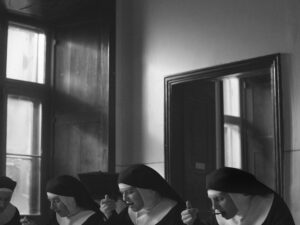
About Aspect ratios
I really prefer 1:1.33, because it is most suited to compose a human face. There will be no negative space. I would also like to mention the Polish film IDA shot in this aspect ratio. With good use of negative space , balanced well with other elements in the frame was striking.
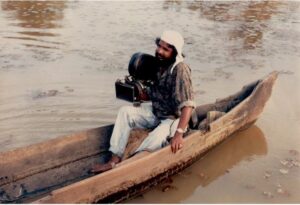
You were one of thefirst few who advocated the concept of ‘Cinematographers as the co-author of the film’. How valid or tenable this concept in this Digital Era ?
The director of any film is inherently the creator or author of that film.
What happened in the west was, in addition to the Director, the script writer and music director also claimed ownership as co-authors of the film as they had tangible things like the script paper& the score sheets . 20 years back the European cinematographers also claimed ownership as co ‘creators’ in the film and said, they leveraged the tangible film negative to claim that. This will help them get a share like a ‘royalty’ whenever that film makes money in any form. But in India we cant think of materialising any such plans. But we cinematographers own the complete image making process and are the main participant in the image creation.
But when Digital came,everyone started believing that anyone can make a film with a digital camera as they could see the output instantly and even mobile cameras has become a part of filmmaking.But just because they have a simple tool doesn’t mean that they can become a filmmaker or a cinematographer. Like how , just because a writing pen is there in everybody’s hands it doesn’t make everybody a writer. It needs a lot of effort to see the truth of the script, to understand the emotion and we need to create the image by understanding the philosophy of the director & his viewpoint. Even there are many first timers who shoot a film but they couldn’t shoot their 2nd or 3rd film.
They couldn’t deliver consistently .One needs to have a proper learning and training from a film school and the biggest advantage of studying in film school is, they will meet diverse peers who are equally ambitious and to discuss and learn and grow together.Another problem we face is we don’t get a proper constructive criticism. In social media irrespective of the project’s quality, sometimes ,everyone is praising and giving likes, which will not help the filmmaker to learn from their mistakes.
Very true. How do you see the recent trends in light fixtures ?
Yes the recent lights are really impressive particularly i am awestruck with the new LED lights. Because, LEDs consume less power,easier to handle and even we have affordable version& we can place it anywhere even in very constrained locations. New LEDs can give good intensity and the throw like the older baby kind of lights, can create millions of colours from the light itself and it will be very helpful for the soft & diffused lighting. But the downside is we need to wait still to have affordable LEDs which produce proper color rendition & better CRI values.
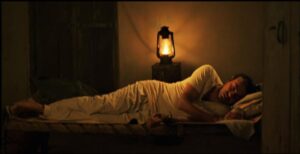
How do you see recent films which have more or less the same kind of imagery and lighting? What do you think could be the reason for it ?
I think every period has a kind of pattern or style which will be prevailing or dominating that period. For example at one era Hollywood Cinematographers used specular highlights & sharp shadows in all their images and it was a trend at that time (Lawrence of Arabia, Gone with the wind and etc.,). Whereas in western world they have a strong tradition of lighting starting from their painting era and The lighting pattern in the Caravaggio’s paintings were replicated in many films- like in Godfather.
Gordon Willis used top lighting in most of the scenes. Because he wanted to camouflage Marlon Brando’s makeup and even his eyes will not be visible &he wanted to make him mysterious.
I even replicated this style in one of my films which is about the life of Galileo. Similarly , the painters like Vermeer & Rembrandt used soft lighting with a lot of detailed textures in their paintings. I believe the film has a natural tendency to record these textures and finer details because of its organically moving grain structure. But due to its fixed array of pixels, digital has still not been able to deliver this realistic organic texture .
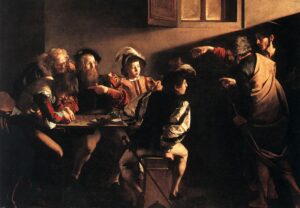
You have great association with many legendary directors like Adoor Goplakrishnan, Padmarajan, Aravindan. What are all the similarities and differences you saw in them?
I should say, like all we have different faces, everyone is different in their worlds. More than that ,the education they have got, where they lived and what kind of circumstances they were brought up shapes the filmmaker. I have once heard from a famous biochemist who said that scientists & artists are the same. They don’t get satisfied with the status quo. So I must say everyone is different and every filmmaker’s style is unique. I had the privilege to operate the camera for a few portions in Adoor Gopalakrishnan’s film ‘Nizhalkuthu’. I was assisting Cinematographer Mankada Ravi Varma who was doing Adoor’s most of the films and unfortunately he got ill and he needed support to handle the camera. When AdoorGoplakrishnan asked for an aide, he chose me to handle the camera. It was a life turning moment for me to handle the camera for Adoor Gopalakrishnan and i was even credited Additional cinematography along with Mankada Ravi Varma. It was such a generous gesture from them both. I learned a lot from them both and I really admired their trust with each other. I admired their rigorous preparation for the shots and their conviction to give the quality visuals without any compromises.
We got to know that you once declined an offer from the famous , award winning Srilankan filmmaker PrasannaVithanage.
Yes it was the offer I got after Piravi. I went to Sri Lanka to meet him for the narration. He narrated the script and screened couple of his previous films. I was really impressed with the visuals of the Cinematographer MahindaBala and I was really perplexed to accept the offer. I felt the cinematographer MahindaBala would definitely get dejected if I say Yes. Because together they had done such a great job in those films, that I wanted their collaboration to continue. So I requested PrasannaVithanage to call MahindhaBala for dinner with us. At the dinner time ,I told PrasannaVithanage , that I am not doing the project and let MahindaBala himself handle the camera for that film.

Great to hear. Could you tell us about your film ‘Ramanujan’- biopic of the famous Mathematician and of course it was one of the last films to have been shot on motion picture film.
Yes, Ramunajam is one of the last film to use motion picture film. The film had lot of portions happening in London and mostly the film had a soft &shadowless lighting. The backdrops would be either wood or darker wallpapers and the skin was caucausian, which is one stop more than the middle grey. So all these constituted a big difference in the visuals .We processed the film in London itself in the only one film lab operating at that time. The films rushes were so rich and appealing. My work was more enhanced due to the processing at the London lab. We must appreciate their quality checks and also the quality of water&chemicals used etc., during the film’s processing.
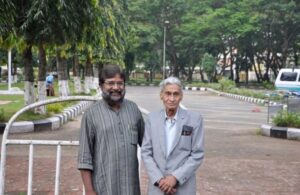
What’s your thought on using specific Colours for a film ? What kind of colours do you love to use and like to avoid ?
Not all films demand such treatment of using specific coloursand I usually use the colours based on the script. In my film ‘Dhaya’ with Director Venu, we used folklore colours. It is loosely based on Arabian Nights stories and we wanted to give a Persian look. Similarly for the film ‘Kahini’ it’s the life of a graphic designer and i used a predetermined color palette and for the film ‘Kshanakathu’ we used the basic color wheel and applied the colours based on human psychology. I have even heard many of the European Directors create acolour script for their films. I love the color Blue and try to avoid the color hospital green.
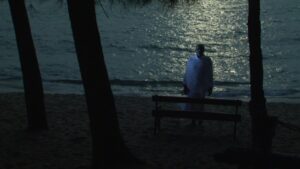
Before winding up , one last question ; You have been able to deliver consistently , inspite of the medium you shoot in , what is the secret ?
In my 2010 Malayalam film , De Nova , there is this one particular exterior shot with the sea behind and the father walking towards the camera ; I shot that at 3.30 pm in the afternoon. Sun was scorching into the sea. He slowly walks into the light , where I had pumped in all of my five 2.5kw HMIs spot on to his face.I was shooting that film with the Sony HVR 270 , one third inch 3 CMOS camcorder with the DVCAM tapes. It was not even fullHD. I always use my reflected light meter and follow the zone system. . I would always peg my exposure for the highlights. So, there is no chance of any highlight burning out. When I took this footage to my grader in Chennai , he asked , was it shot on FUJI film negative stock.
So, understand the medium with which you are capturing and work with it , to get what you want.
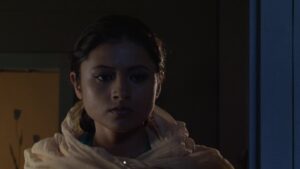
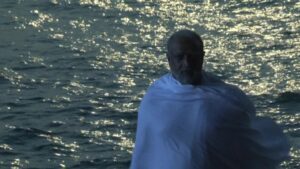
Sunny Joseph has various roles to play as a Teaching Faculty of Cinematography for years, Served as Jury member national film awards and President Indian Society of Cinematographers ISC.
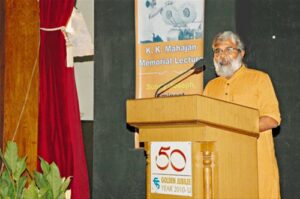
Selected filmography
- Theertham (1987)
- Piravi (1988)
- Ore Thooval Pakshikal (1988)
- Eenam Maranna Kattu (1988)
- Unni (1989)
- Pooram (1989)
- Alicinte Anveshanam (1989)
- Ottayal Pattalam (1990)
- Ottayadipathakal (1990)
- Kshanakathu (1990)
- Vasthuhara (1991)
- Aanaval Mothiram (1991)
- Satyaprathinja (1991)
- Mangamma (1997)
- Kahini
- Sanabi
- America America (1995)
- Mogamul (1995)
- Daya (1998)
- Train to Pakistan (1998)
- Angene Oru Avadhikkalathu (1999)
- Oru Cheru Punchiri (2000)
- Nizhalkuthu (2002)
- Dance Like A Man (2003)
- Thilaadanam (2002)
- Daivanamathil
- Kamli (2006)
- Ami, Yasin Ar Amar Madhubala (2007)
- Chintu Ji
- Janala
- O Maria (2011)
- Ramanujan (2014)
- Sweet Home (2014)
For more INFO his Official website :https://www.sunnyjosephisc.net/
Drafted by : Gowrishankar
Conversation idea : C.J.Rajkumar and Mahesh Muthuswami.
